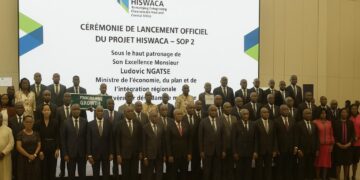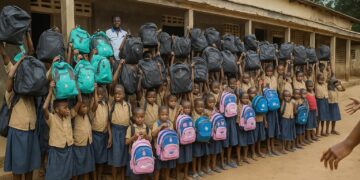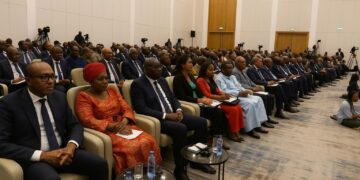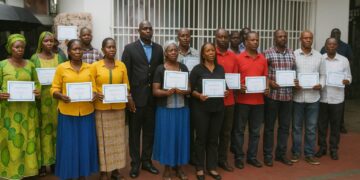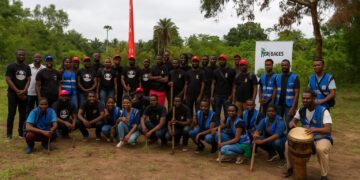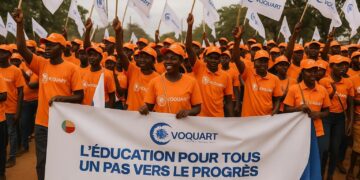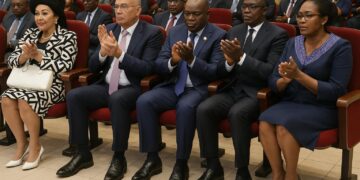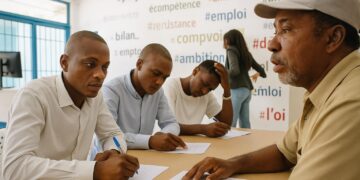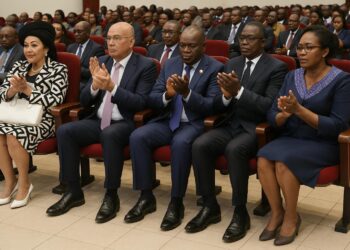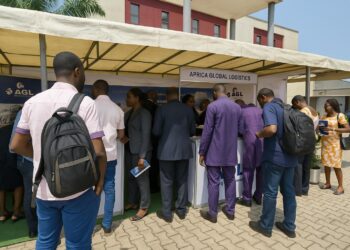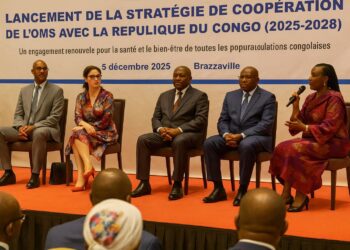Government accelerates teacher recruitment
Factory-floor machinery whirs in new workshops while chalk dust still settles in older classrooms; both scenes illustrate why the Ministry of Technical and Vocational Education has put hiring on a war footing. Minister Ghislain Thierry Maguessa Ebomé argues that closing the staffing gap will determine how competitively graduates enter regional value chains.
Speaking to reporters on 30 September in Brazzaville, the minister confirmed that 1 820 teachers have joined payrolls between 2021 and 2024, with a further 280 volunteer instructors absorbed during 2025. Official gazettes corroborate these numbers, and UNESCO’s Institute for Statistics lists a parallel six-point rise in the ratio of trainers to learners.
Numbers behind the drive
Recruitment has been prioritised in heavy-duty subjects such as welding, mechatronics, agro-processing and digital coding. Human-resources tallies obtained from the Directorate of Planning suggest that two-thirds of the new hires possess at least a bachelor’s degree in applied sciences, meeting the competency threshold laid down in the 2022 reform decree.
Average classroom size in technical streams, previously hovering above forty-five learners, is projected to fall below thirty-five next year. According to the 2024 Public Expenditure Review published by the World Bank, every ten-point drop in that indicator historically lifts pass rates by about four percentage points in comparable economies.
Financing the expanded workforce
Treasury data show that wage outlays for the sub-sector climbed from CFAF 24 billion in 2021 to an estimated CFAF 33 billion this fiscal year. The Ministry of Finance frames the increase as fiscally neutral because revenues from non-oil taxes have grown faster than pay-roll costs since 2022.
An International Monetary Fund staff statement in March highlighted the government’s focus on ‘quality rather than quantity’ spending. Officials explain that each franc devoted to a qualified instructor offsets the future cost of remedial training schemes often borne by enterprises in mining, forestry and telecoms.
Curriculum geared to market demand
Beyond headcount, the ministry is restructuring programmes to mimic industry flow lines. A single national baccalaureate option replaces previously fragmented tracks, easing mobility for learners while simplifying recognition for employers scouting talent across departments.
Under the new framework, final-year students undertake compulsory internships of at least six weeks. The Confederation of Congolese Employers welcomes the measure, describing it as ‘a direct pipeline from the classroom to the shop floor’. Early pilots in Pointe-Noire’s logistics corridors saw fifty interns retained as junior technicians.
Regional deployment and gender balance
Teacher allocation algorithms now combine demographic data with industrial-cluster mapping. Kouilou, home to refining and petrochemicals, receives higher shares of process-engineering instructors, whereas Sangha, rich in timber, attracts specialists in saw-milling and drying technologies.
Brazzaville also shutters four legacy girls-only technical colleges to create co-educational lycées. Officials stress that the move responds to demands from rural families whose daughters travel long distances for training. Preliminary enrolment figures indicate female participation in mechanics courses climbing from eight to twelve percent in just two cohorts.
Partnerships powering the reform
Donor support remains selective but catalytic. The French Development Agency co-finances modern laboratories, while the African Development Bank provides results-based grants tied to graduate employment. Local private groups such as the timber firm INTERWOOD contribute equipment under tax-credit agreements spelled out in the 2023 Investment Code.
Public–private governance councils meet quarterly to adjust syllabi, a practice the World Economic Forum cites as best-in-class for frontier markets. ‘The state covers pedagogy; firms cover technology cycles they know best,’ notes a senior executive at the national employers’ union, pointing to joint certifications now accepted in Cameroon and Gabon.
Outlook for the 2025-2026 academic year
The administration targets a teacher-student ratio of one-to-thirty by 2026, aligned with Southern African Development Community benchmarks. Data modelling by the ministry’s think-tank suggest the current recruitment pipeline satisfies eighty-five percent of that objective if attrition stays within historical norms.
Further efficiency gains are expected from a digital platform that tracks workloads, absenteeism and professional development. Pilots funded by the Korean aid agency report a ten-day reduction in processing times for overtime claims, freeing managers to focus on pedagogy.
Stakeholders concur that challenges persist, notably in retaining specialists tempted by private-sector salaries. Nevertheless, wage talks are underway to peg certain technical grades to productivity bonuses paid out of a skills levy collected from large employers.
Minister Maguessa Ebomé concludes that the reforms aim to ‘place Congo on an equal footing with the continental gigafactories emerging in battery metals and renewable power’. The upcoming school year will therefore test whether a quantitative hiring push can truly translate into qualitative national competitiveness.






